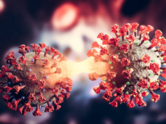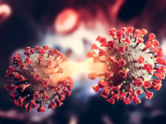01/7Primary liver cancer is medically termed as hepatocellular carcinoma

Primary liver cancer, also known as hepatocellular carcinoma (HCC), is a type of cancer that originates in the hepatocytes or the main liver cells. It is a significant global health concern and is one of the most form of liver cancer. According to available data, the incidence of the primary liver cancer in India for men ranges from 4 to 7.5 and for women 1.2 to 2.2 per 100,000 population per year. This makes it extremely important to understand the basics of primary liver cancer, its symptoms, and the associated risk factors for effective management of the disease and getting medical help timely.
02/7What are the early symptoms?


The symptoms of primary liver cancer can vary, and in the early stages, they may be subtle or nonexistent. As the disease progresses, individuals may experience:
Abdominal Pain: Persistent pain or discomfort in the upper abdomen may occur as a tumor grows and exerts pressure on surrounding tissues.
Jaundice: Yellowing of the skin and eyes (jaundice) is a common symptom, indicating impaired liver function and the accumulation of bilirubin.
Swelling: Swelling of the abdomen or legs, known as ascites, may occur due to fluid buildup.
Enlarged Liver or Spleen: The liver or spleen may become enlarged and palpable during a physical examination.
03/7Other symptoms one should not ignore


Rapid and unexplained weight loss can be a sign of various cancers, including liver cancer. A reduced desire to eat, often leading to unintentional weight loss, is another key symptom. Generalized weakness and fatigue may result from the liver's compromised ability to perform essential functions. As liver function declines, individuals may experience nausea and vomiting.
04/7What are the risk factors?


Several risk factors increase the likelihood of developing primary liver cancer. Understanding these factors can help identify individuals who may be at higher risk and may benefit from regular screening and monitoring. Some key risk factors include:
Chronic infection with hepatitis B virus (HBV) or hepatitis C virus (HCV) significantly increases the risk of liver cancer. These infections can lead to long-term liver inflammation, cirrhosis, and eventually, the development of cancerous cells.
Cirrhosis, a condition characterized by scarring of the liver tissue, is a significant risk factor for liver cancer. Chronic alcohol abuse, viral hepatitis, and non-alcoholic fatty liver disease (NAFLD) are common causes of cirrhosis.
Excessive and chronic alcohol consumption is a known risk factor for liver cancer. It can contribute to cirrhosis and increase the likelihood of malignant transformation.
NAFLD, a condition characterized by the accumulation of fat in the liver, has been associated with an increased risk of liver cancer, particularly in the presence of cirrhosis.
05/7Complications that can trigger this condition


Aflatoxins: Exposure to aflatoxins, toxic substances produced by certain molds that grow on crops like peanuts and corn, is a risk factor for liver cancer. Aflatoxin-contaminated food is more common in some regions of the world.
Diabetes: Individuals with diabetes, especially those with poorly controlled diabetes, have an elevated risk of developing liver cancer.
Obesity: Obesity is linked to an increased risk of liver cancer, particularly when associated with conditions like NAFLD and diabetes.
Hereditary conditions: Certain hereditary conditions, such as hemochromatosis and Wilson's disease, can increase the risk of liver cancer.
06/7Health tips


It's essential to note that the symptoms can also be associated with various other liver conditions or unrelated health issues. Anyone experiencing persistent or worsening symptoms should undergo a complete medical checkup. Regular monitoring and early detection are vital for improving treatment outcomes in individuals at risk of developing primary liver cancer. Additionally, lifestyle modifications, vaccination against hepatitis B, and effective management of chronic liver conditions can contribute to reducing the risk of liver cancer.
07/7What are the functions of the liver


The liver plays a crucial role in various physiological processes for maintaining overall health. Its primary functions include detoxification, metabolizing drugs and toxins, breaking down fats, producing bile necessary for digestion, and storing glucose in the form of glycogen for energy regulation. Additionally, the liver synthesizes proteins crucial for blood clotting, produces cholesterol, and helps in the regulation of amino acids. It also aids in filtering and clearing out waste products from the blood, enabling the body to function optimally.













































































































closecomments
SIGN IN WITH
GoogleEmail